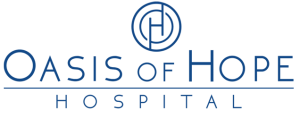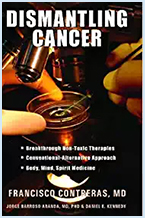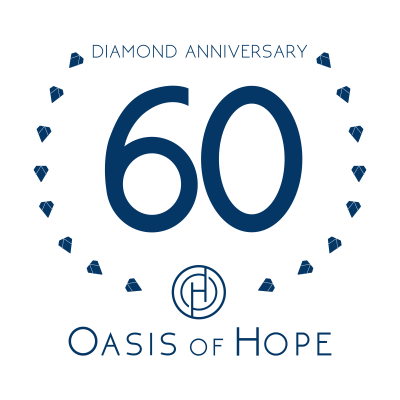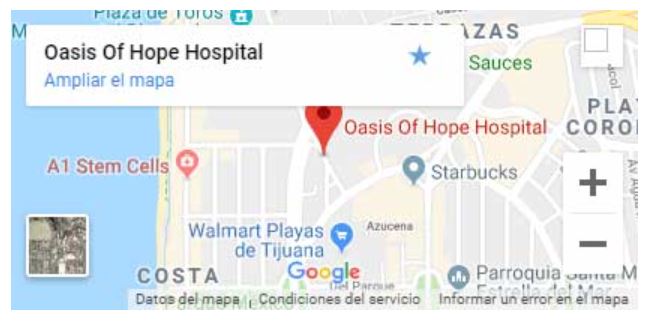Home Cancer Treatments
at Oasis of Hope
The Place for Alternative Cancer Treatment
“Our Home-Care Treatment is designed for patients who have already been treated at Oasis for their cancer. The Home Care plan is a selection of nutraceuticals developed at Oasis for our patients.”
The Oasis of Hope home care treatment program provides its patients with an at-home therapeutic regimen designed for continued recovery with constant support from the Oasis of Hope medical staff. With most cancer treatments, it is necessary to give the body time to evaluate how it has reacted to the therapies. In addition, it is necessary to give the body a few weeks to heal to continue pre-conditioning the body for further treatment. The Oasis of Hope provides patients with a comprehensive home care treatment program designed to slow the growth of the tumor between the initial cancer treatments and eliminate or postpone the need for further treatment.
Home Cancer Therapies
While patients receive treatment, we will begin to educate them on how to live healthy lives when they return home and how to continue therapy.
Doctors, nurses, and the follow-up department will work with patients and their loved ones to design and personalize their home care treatment.
Slowing Tumor Growth
One way in which we strive to suppress tumor growth is by decreasing blood levels of certain pro-growth hormones, such as insulin, free IGF-I, and free estrogen, that promote increased growth and survival of many types of cancer cells. This is achieved with a lifestyle program that stresses a low fat, whole-food vegan or quasi-vegan diet, a regular program of aerobic exercise training, such as brisk walking, and a reduction of excess body fat in overweight patients fighting cancers in which obesity has a known negative prognostic impact.
Suppressing Angiogenesis
A key strategy that Oasis of Hope uses to impede the angiogenic process is called “metronomic chemotherapy.” This entails the daily use of one or more chemotherapy drugs in a dose so low that no significant toxicity to healthy tissues or side effects result.
Other nutraceuticals and drugs employed in the At-Home regimens with potential for slowing angiogenesis include: The chief compound in green tea polyphenols (EGCG), the amino acid glycine, salsalate, silibinin, diclofenac, valproic acid, vitamin D, and fish oil.
Supporting the Immune System’s Attack on Cancer
The At-Home regimen includes many agents that can aid the immune system’s ability to attack cancer by boosting the function of natural killer cells. One of the most intriguing is the hormone melatonin, administered once daily before bedtime. Multiple clinical studies in Italy show that this regimen tends to have a very favorable, statistically significant impact on survival in cancer patients.
Preventing Metastases
The At-Home regimens include one agent that specifically targets the metastatic process – modified citrus pectin derived from the chief form of fiber in citrus fruits. This absorbable form of pectin interacts with galectin-3, a type of molecular “hook” that cancer cells, when circulating in the bloodstream, use to attach themselves to the walls of small blood vessels (capillaries).
Preventing Cachexia
A substantial loss of muscle mass (cachexia) is a common complication of advanced cancer.
The Oasis of Hope At-Home regimen includes several elements that have potential for preventing cachexia, including salsa late, melatonin, glutamate, and fish oil.
Alteration of Lifestyle
Doctors at Oasis of Hope Hospital have observed that the patients who get the best results are those who make a real commitment to the program, the ones who have the discipline and desire to adhere to the therapies prescribed. A tragic error that many patients make is to abandon therapy as soon as they start to feel better or when they experience remission. Those who continue therapy, adhere to the nutrition program, and come back for the maintenance treatments and the follow-up program gain the best results.
Therefore, the hospital’s administration developed a program for patients to come back every six months for a two-day follow-up visit with their doctors at no charge. The follow-up program lasts a full five years at no additional cost to the patient. At these follow-up visits all the doctors monitor the patient’s progress and make any modifications to the home care therapy that will better meet the patient’s healthcare needs.












